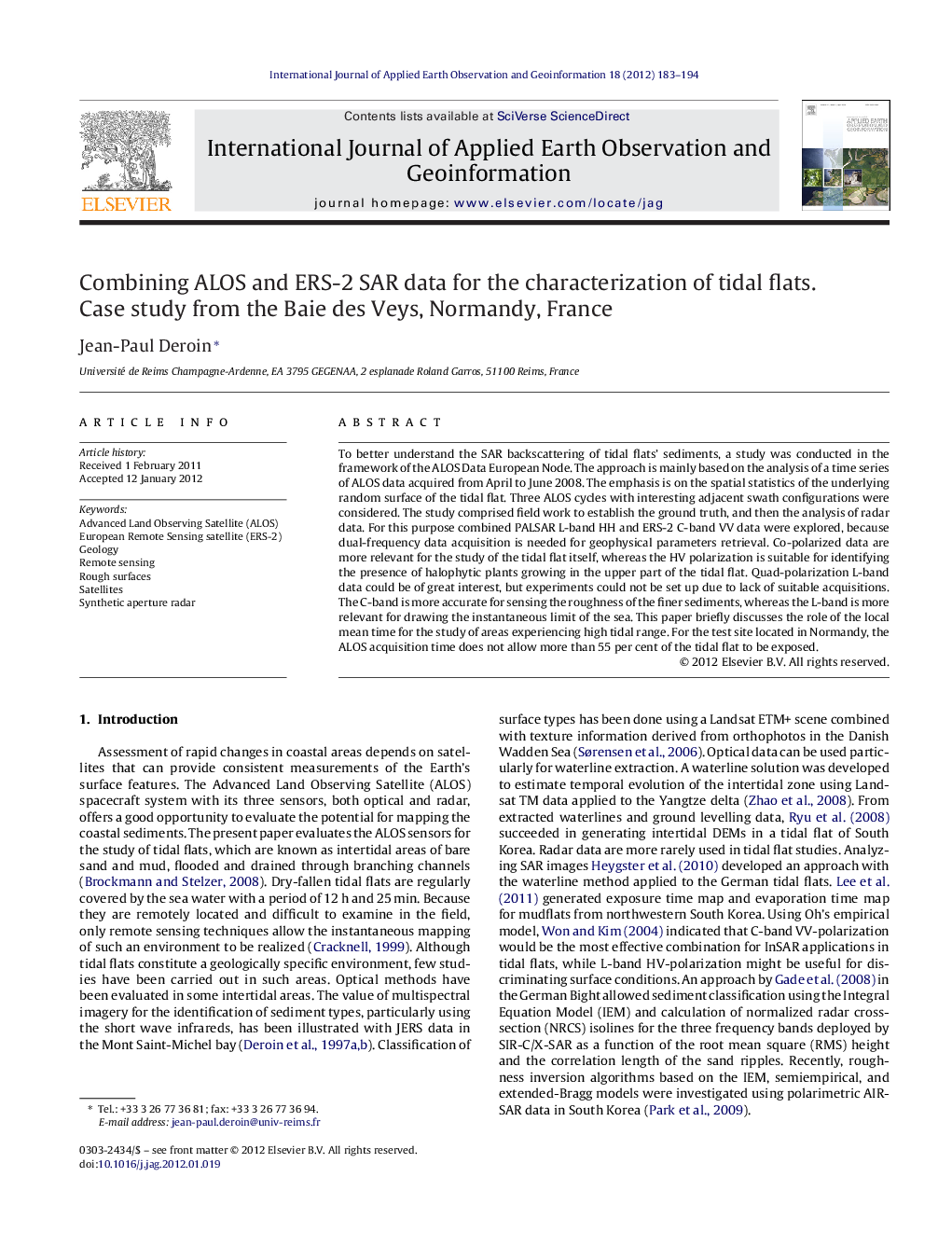| کد مقاله | کد نشریه | سال انتشار | مقاله انگلیسی | نسخه تمام متن |
|---|---|---|---|---|
| 4464924 | 1621842 | 2012 | 12 صفحه PDF | دانلود رایگان |

To better understand the SAR backscattering of tidal flats’ sediments, a study was conducted in the framework of the ALOS Data European Node. The approach is mainly based on the analysis of a time series of ALOS data acquired from April to June 2008. The emphasis is on the spatial statistics of the underlying random surface of the tidal flat. Three ALOS cycles with interesting adjacent swath configurations were considered. The study comprised field work to establish the ground truth, and then the analysis of radar data. For this purpose combined PALSAR L-band HH and ERS-2 C-band VV data were explored, because dual-frequency data acquisition is needed for geophysical parameters retrieval. Co-polarized data are more relevant for the study of the tidal flat itself, whereas the HV polarization is suitable for identifying the presence of halophytic plants growing in the upper part of the tidal flat. Quad-polarization L-band data could be of great interest, but experiments could not be set up due to lack of suitable acquisitions. The C-band is more accurate for sensing the roughness of the finer sediments, whereas the L-band is more relevant for drawing the instantaneous limit of the sea. This paper briefly discusses the role of the local mean time for the study of areas experiencing high tidal range. For the test site located in Normandy, the ALOS acquisition time does not allow more than 55 per cent of the tidal flat to be exposed.
► We study tidal flats, which represent flat environments using different SAR data.
► Tidal flats are among the world's most difficult place to map.
► Combination of multifrequency data allows the different surface types to be mapped.
► Vegetation of the upper part of the tidal flat could play a role in the backscattering.
Journal: International Journal of Applied Earth Observation and Geoinformation - Volume 18, August 2012, Pages 183–194